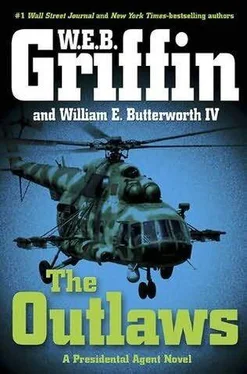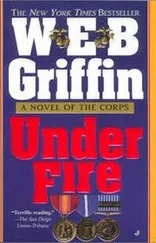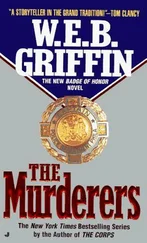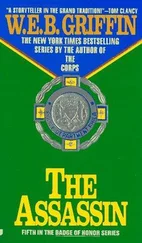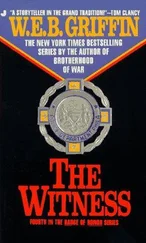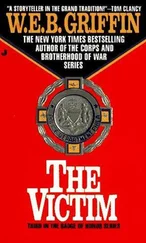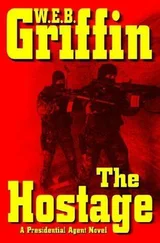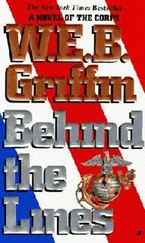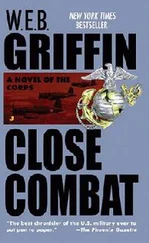W Griffin - The outlaws
Здесь есть возможность читать онлайн «W Griffin - The outlaws» весь текст электронной книги совершенно бесплатно (целиком полную версию без сокращений). В некоторых случаях можно слушать аудио, скачать через торрент в формате fb2 и присутствует краткое содержание. Жанр: Триллер, на английском языке. Описание произведения, (предисловие) а так же отзывы посетителей доступны на портале библиотеки ЛибКат.
- Название:The outlaws
- Автор:
- Жанр:
- Год:неизвестен
- ISBN:нет данных
- Рейтинг книги:3 / 5. Голосов: 1
-
Избранное:Добавить в избранное
- Отзывы:
-
Ваша оценка:
- 60
- 1
- 2
- 3
- 4
- 5
The outlaws: краткое содержание, описание и аннотация
Предлагаем к чтению аннотацию, описание, краткое содержание или предисловие (зависит от того, что написал сам автор книги «The outlaws»). Если вы не нашли необходимую информацию о книге — напишите в комментариях, мы постараемся отыскать её.
The outlaws — читать онлайн бесплатно полную книгу (весь текст) целиком
Ниже представлен текст книги, разбитый по страницам. Система сохранения места последней прочитанной страницы, позволяет с удобством читать онлайн бесплатно книгу «The outlaws», без необходимости каждый раз заново искать на чём Вы остановились. Поставьте закладку, и сможете в любой момент перейти на страницу, на которой закончили чтение.
Интервал:
Закладка:
W E B Griffin
The outlaws
ONE
El Obeid Airport North Kurdufan, Sudan 2130 31 January 2007 The small convoy-two battered Toyota pickups, a Ford F-150 pickup, and a Land Rover-had attracted little attention as it passed through Al-Ubayyid (estimated population around 310,000).
Al-Ubayyid was the nearest (seven kilometers) town to the El Obeid Airport, which was sometimes known as the Al-Ubayyid Airport. The town of Al-Ubayyid was sometimes known as El Obeid. In this remote corner of the world, what a village or an airport-or just about anything else-was called depended on who was talking.
The men were all armed with Kalashnikov rifles, and all bearded, and all were dressed in the long pastel-colored robes known as jalabiya, and wearing both tagia skullcaps and a length of cloth, called an imma, covering their heads.
The beds of the trucks each held one or two armed men. It was impossible to tell-even guess-what the cargo might be, as it was covered with a tarpaulin.
The convoy looked, in other words, very much like any other convoy passing through-or originating in-Al-Ubayyid on any given day. By whatever name, the town had been a transportation hub for nearly two centuries. First, there had been camel caravans. Then a rail line. Then roads-it's a nine-hour, five-hundred-kilometer trip from Khartoum-and finally, six kilometers south of town, the airport with a runway nearly a thousand meters long.
As it approached the airport, the convoy slowed and the headlights were turned off. It moved near to the end of the chainlink fence surrounding the airport and stopped, remaining on the road.
A dozen men-everyone but the drivers-quickly got out of the vehicles.
The man who had been in the front seat of the Land Rover went to the floodlight-not much of a floodlight, just a single fluorescent tube-on a pole at the end of the fencing and quickly shot it out with a burst from a.22 caliber submachine gun. The weapon was "suppressed," which meant that perhaps eighty percent of the noise a.22-long rifle cartridge would normally make was silenced.
He then quickly joined the others, who were in the process of quickly removing the immas and skullcaps from their heads and finally their long jalabiya robes. The discarded garments were then tossed into the Land Rover.
Under the jalabiya robes they had been wearing black form-fitting garments, something like underwear except these had attached hoods which, when they had been pulled in place, covered the head and most of the face.
Night-vision goggles and radio headsets were quickly put in place.
Next, they took from the Land Rover and the pickups black nylon versions of what was known in the U.S. and many other armies as "web equipment" and strapped it in place on their bodies.
The man with the.22 caliber submachine gun-the team leader-was joined by two other men equipped with special weapons. One was armed with a high-powered, suppressed sniper's rifle that was equipped with both night vision and laser sights. The other had a suppressed Uzi 9mm submachine gun.
The laws of physics are such that no high-powered weapon can ever be really suppressed, much less silenced. The best that could be said for the suppressed sniper's rifle was that when fired, it didn't make very much noise. The best that could be said for the Uzi was that when fired, it sounded like a suppressed Uzi submachine gun, which meant that it wasn't quite as noisy as an unsuppressed Uzi.
The sights on the sniper's rifle, which was a highly modified version of the Russian Dragunov SVD-S caliber 7.62 x 54R sniper's rifle, were state-of-the-art. When looking through the night-vision scope-which had replaced the standard glass optical scope-the marksman was able to see on the darkest of nights just about anything he needed to.
And by sliding a switch near the trigger, a small computer was turned on. A laser beam was activated. The computer determined how distant was the object on which sat the little red spot, and sent that message to the crosshairs on the sight. The result was that the shooter could be about ninety percent sure that-presuming he did everything else required of a marksman since the rifle was invented, such as having a good sight picture, firing from a stable position, taking a breath and letting half of it out before ever so carefully squeezing the trigger-the 147-grain bullet would strike his target within an inch or so of where the little red dot pinpointed.
The team leader made a somewhat imperious gesture, which caused another man-who had been standing by awaiting the order-to apply an enormous set of bolt cutters to the chainlink fence.
Within a minute, he had cut a gate in the fencing through which everyone could-and quickly did-easily pass.
The runway was about fifty meters wide. An inspection, which the team leader considered the most dangerous activity of this part of the operation, was required. A good leader, he had assumed this responsibility himself; he walked quickly in a crouch down the dotted line marking the center of the runway toward the small terminal building.
The man with the suppressed Uzi walked down the runway halfway between the dotted line and the left side, and the man with the sniper's rifle did the same thing on the right.
All the others made their way toward the terminal off the runway, about half on one side and half on the other. Most of them were now armed with the Mini Uzi, which is smaller than the Uzi and much larger than the Micro Uzi. The Kalashnikovs, as much a part of their try-to-pass-as-the-locals disguises as anything else, had joined the jalabiya robes and skullcaps in the Land Rover.
They had gone about halfway down the runway when a dog-a large dog, from the sound of him-began to bark. Or maybe it was the sound of two large dogs.
Everyone dropped flat.
The man with the Dragunov assumed the firing position, turned on the night sights, and peered down the runway.
He took his hand off the fore end and raised it with two fingers extended.
The team leader nodded.
The two shots didn't make very much noise, and there was no more barking.
The team leader considered his options.
It was possible that the shots had been heard, and equally possible that someone had come out of the terminal to see why the dogs were barking on the runway, or that they had come out-or were about to-to see why the barking dogs had stopped barking.
That meant the sooner they got to the terminal, the better.
But the problem of having to inspect the runway remained-that was the priority.
The team leader activated his microphone.
He spoke in Hungarian: "Trucks, lights out-repeat, lights out-to one hundred meters of the terminal. Hold for orders."
There was no need to give orders to the others; they would follow his example.
He got to his feet and resumed his inspection, this time at a fast trot, still crouched over.
The sniper and the man with the suppressed Uzi followed his example. The men off the runway, after a moment, followed their example.
They came to the dogs, lying in pools of blood where the animals had fallen, about a hundred meters from the terminal building.
The team leader could now see the flicker of fluorescent lights in the terminal building itself, and in the building beside it, which he knew housed the men-four to six-and their families-probably twice that many people-who both worked and lived at the airport.
And he could hear the exhaust of a small generator.
That was powerful enough to power the lights he saw now, and the two dozen or so fluorescent "floodlights" around the perimeter fence, but it wasn't powerful enough to power the runway lights.
He looked up at the control tower. There was no sign of lights, flickering fluorescent or otherwise.
Читать дальшеИнтервал:
Закладка:
Похожие книги на «The outlaws»
Представляем Вашему вниманию похожие книги на «The outlaws» списком для выбора. Мы отобрали схожую по названию и смыслу литературу в надежде предоставить читателям больше вариантов отыскать новые, интересные, ещё непрочитанные произведения.
Обсуждение, отзывы о книге «The outlaws» и просто собственные мнения читателей. Оставьте ваши комментарии, напишите, что Вы думаете о произведении, его смысле или главных героях. Укажите что конкретно понравилось, а что нет, и почему Вы так считаете.
